The Petrified Forest National Park
Anna and her sons tell of their experience of Petrified Forest National Park.
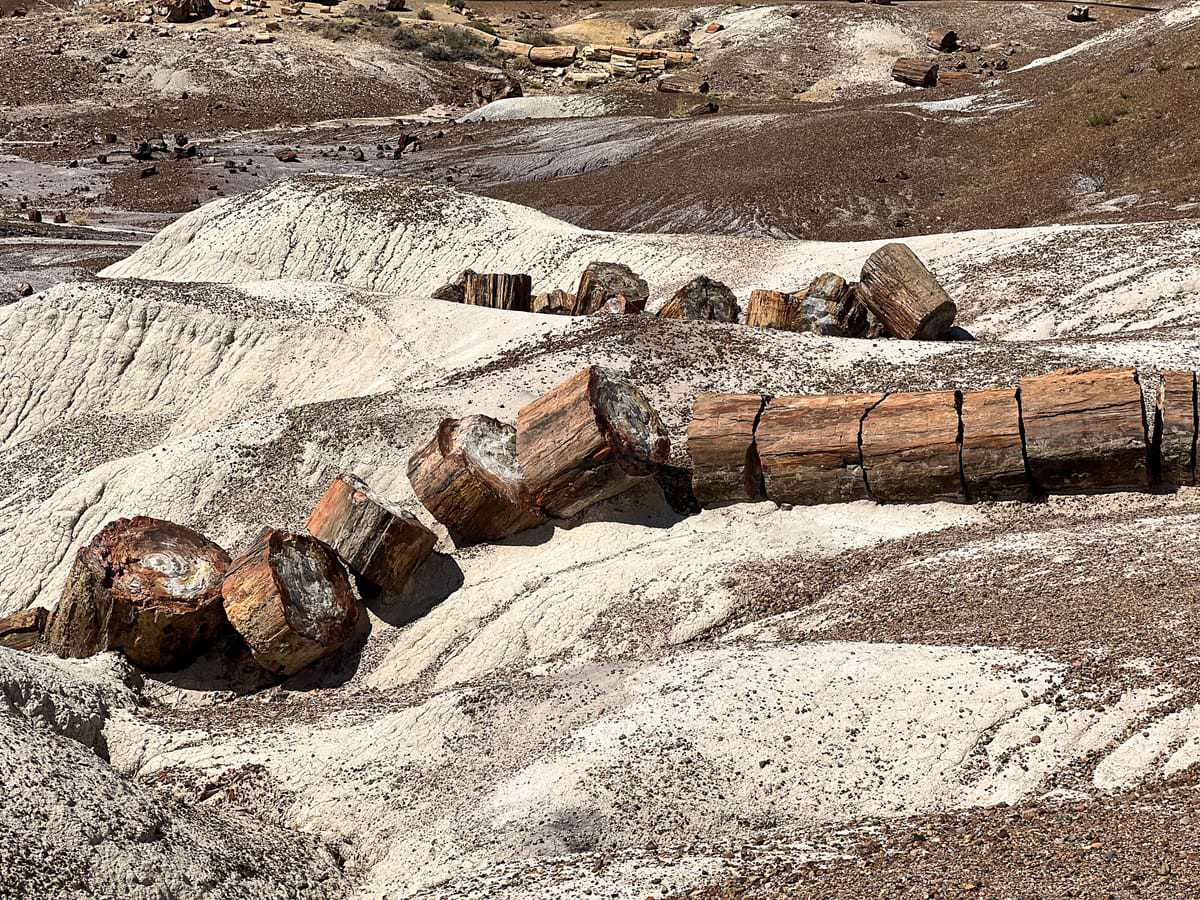
The Petrified Forest National Park is in Arizona, US. It features one of the largest concentrations of petrified wood in the world, multihued bad-lands, archeological sites, historical landmarks.
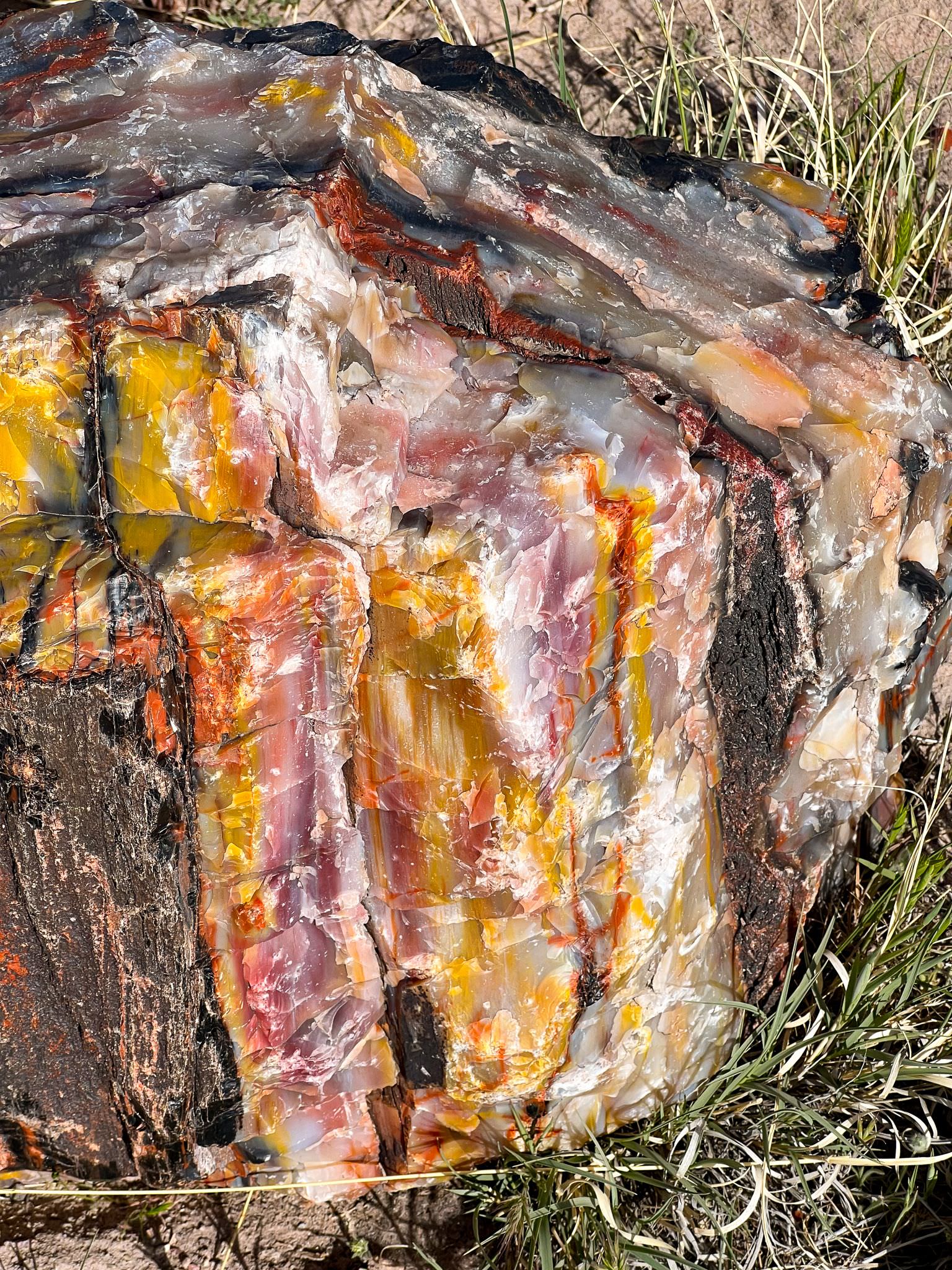
We visited the Park at the end of April this year, so it wasn't too crowded, nor too hot. While in the park, we drove a lot and did a bit of hiking. It took us a whole day to go through it. We took our time to stop at the most points of interest, to take pictures, read the exhibits, hike, and enjoy the day.
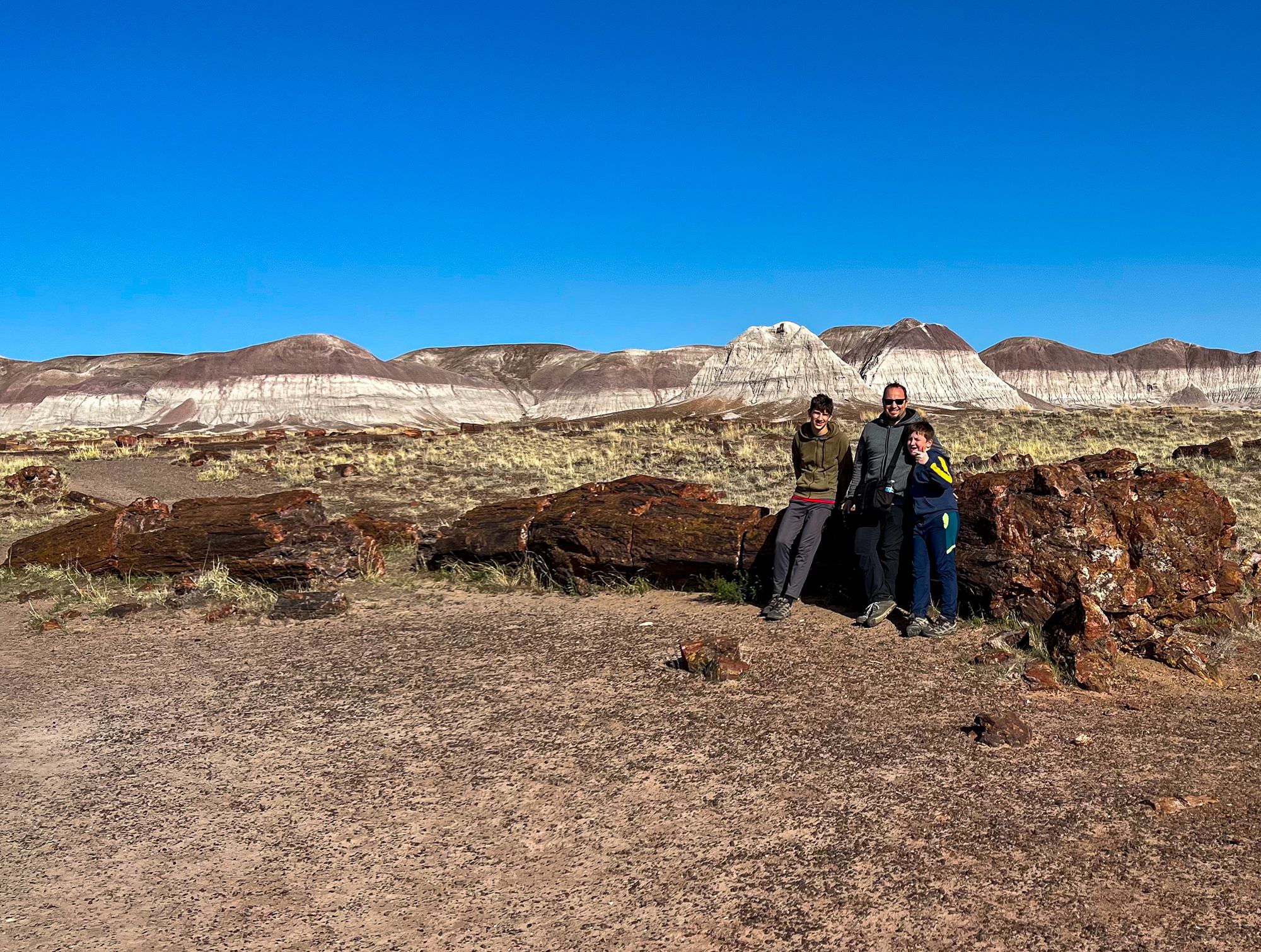
The most interesting experience we had in this park was to examine the petrified wood and learn about their history. Petrified wood is fossilized wood, wood turned into stone. How is that possible? For wood like the one at Petrified Forest National Park to become petrified, it needed to be buried rapidly in water-saturated sediments. The presence of water reduces the availability of oxygen, which inhibits decomposition by fungi and bacteria, allowing the minerals in the sediments to replace the cell walls and fill void spaces in the wood.

It seems there is a large amount of petrified wood all around the world. Some of it, like the trees in the Petrified Forest Park, comes from wood that had been rapidly covered by a huge amount of water coupled with cataclysmic land activity.
It is hard to believe that a lush landscape teeming with vegetation and life existed once in this dry wilderness. We walked among the myriad of crystallized logs that were once gigantic trees, awed at the scene unfolding in front of our eyes. It was beautiful and ominous at the same time, as if judgement still hanged heavy above this out of this world place. The information on the exhibits points to a flood of cataclysmic proportions that swept the area of exuberant life, bringing in an era of oppressive heat and dryness.

The visit to the Petrified Forest National Park, with its display of fossilized trees as evidence, confirmed to me that the episode of the flood of gigantic proportions that changed the life on Earth forever described in the Bible is not a fairly tale to be dismissed or laughed at.

Other than studying the fascinating petrified wood, I loved exploring the desert landscape in the Park. The hills made of multi-hued badlands are fascinating to watch.

In the spring, you can still find some pretty flowers to match the lavender layers of the Blue Mesa. These scorched places are not devoid of life.

People from different times in history left behind their marks on the landscape. The petroglyphs at the Newspaper Rock tell fascinating stories, jumbled up in meanings that have been lost together with the people who put them there.

We liked visiting the one hundred years old Painted Desert Inn built from petrified wood and redesigned in 1930, in the Pueblo Revival Style, an Arts and Crafts movement drawing from Spanish Colonial and Puebloan cultures. It is expressed in buildings harmonizing with their natural environment and regional culture.

Mihai, 14
The Petrified Forest was discovered in 1870 by a Swedish homesteader named Charles Evans. One day, he was busily raking his pasture when his rake hit the top of an old hollow log. Evans found that the log was as hard as stone, so he called upon the famous paleontologist O.C. Marsh.
Later, people found many types of redwood trees, along with petrified pine and oak trees and leaves or needles from Spruce, Douglas Fir, Hemlock, Alder, Myrtle, Tan Oak, California Laurel, Rhododendron, and Huckleberry, as well as unknown species of Oak.

When we visited the Petrified Forest, it was a nice sunny day. First, we stopped at EVERY SINGLE OUTLOOK that could be found on the road. We visited the Painted Desert Inn, from which we could see the Painted Desert very well. The Painted desert is a series of dunes which are very colorful.
Next, we drove to the Painted Desert overlook, where we saw more views of the Painted Desert. Oh, by the way, the visitor center that we visited was called… The Painted Desert Visitor Center. Sensing a theme yet?

Luckily, the next stop had nothing to do with painting or deserts. It was the famous 1932 Studebaker, which sits on what was Route 66. This rusty car was placed there in 2006 as part of the Route 66 monument, which includes a vintage car-themed bench and a line of telephone poles showing where the famous road once passed through the park.

Later, we saw Puerco Pueblo, which was a series of old Puebloan homes. These were in a Pueblo village, which might have held up to 100 people. They weren't so interesting because there wasn't much of them left.
We stopped at the Newspaper Rock, which was a big rock with countless undecipherable petroglyphs on it. These were probably made by the people who lived in the Puebloan homes because they weren't so far away from the village.
Blue Mesa was our next stop, and there we saw the extremely colorful badlands hills that had an unmistakable tinge of blue on them. The trail we took was paved with a collection of small stones. Paul even posed for a picture on top of a hump that looked like a dinosaur's back (it wasn't blue).
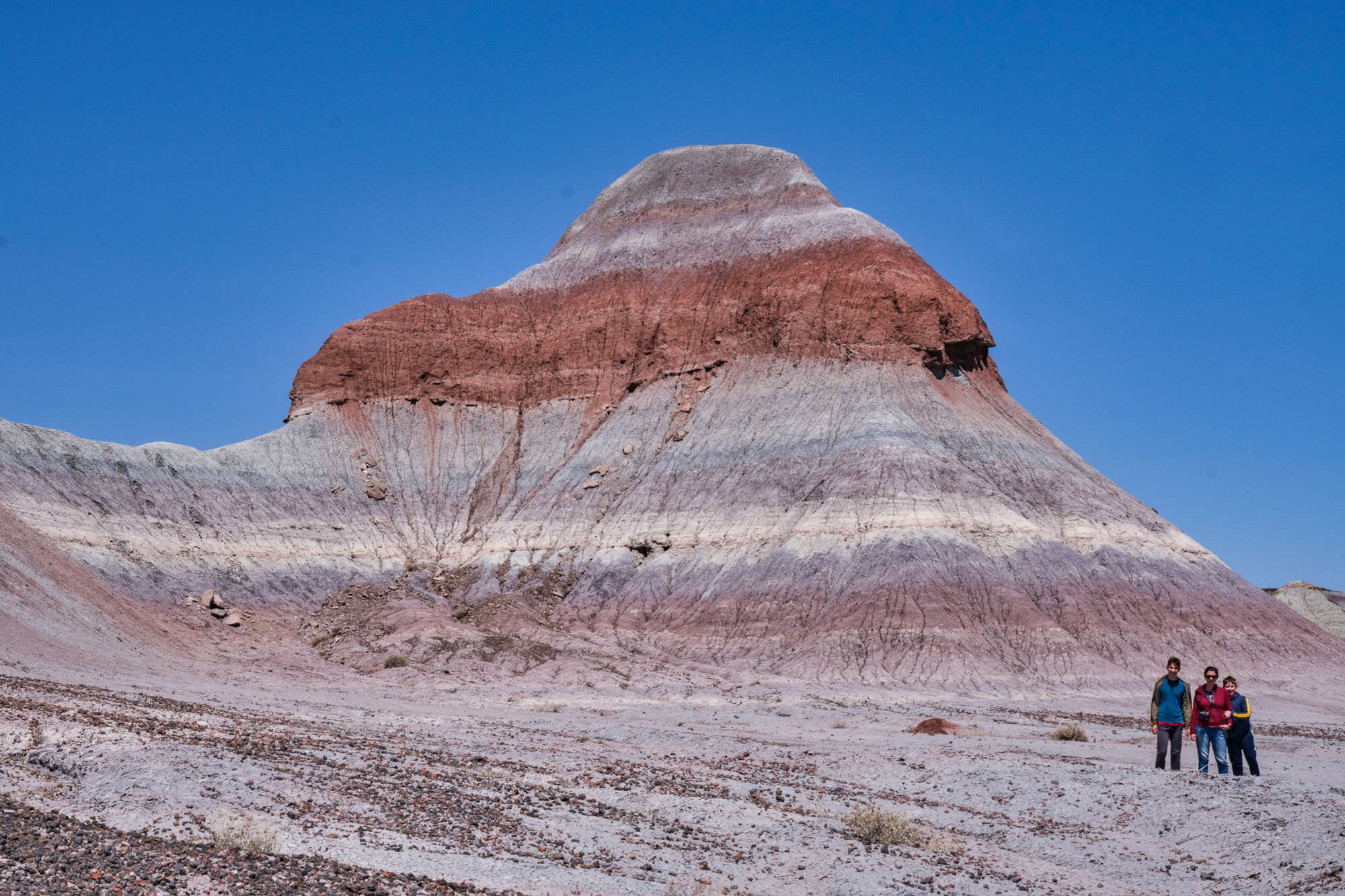
The Agate Bridge was our next stop. This long petrified log was spanning a disproportionately small gap. Park Management put a concrete strip under it so that it doesn't fall and break. It is not allowed to climb on the Agate Bridge.

The ninth stop was the one we had been looking for, where we finally got to see the petrified logs. There were MANY petrified logs laying all over the place, logs that were buried suddenly by a flood and then hardened because of the minerals in the dirt.
Crystal Forest was another collection of logs that had a path running through the middle of them so that you could see all the logs in their full lengths.

The Rainbow Forest Museum was the next stop, but it wasn't so interesting. However, a trail nearby was more fascinating. It was called the Long Logs Trail and the Agate House. The trail is said to be 2.6 miles (4.18 km) long, but that measurement is the round trip.

The Agate House is a small pueblo that is a reconstruction of what a house made of petrified logs might have looked like. The trail showcases more enormous petrified logs and is a good place to go after sitting in the car for a long time.
My favorite stop was the Agate House and Long Logs Trail because we got to hike there.
The Petrified Forest is:
The shiny gemstone-like petrified logs in the field;
The rough edges of the Agate House;
The chirping of small birds that were flying around;
The small petroglyphs on the boulder, you had to use binoculars to see them;
The lukewarm water we drank at the Long Logs trail, stay hydrated!
I would go again to see the petrified logs one more time.
Paul, 11
The Petrified Forest National Park is known for the abundance of petrified logs swept there by a Flood.
On the road to the petrified trees we stopped at an old Studebaker which was on the road when Route 66 was still in use. We walked right up to it and looked into the machine through the windows, seeing the engine of the car still in place, then sat down on a bumper shaped bench.

The next interesting stop was The Blue Mesa, which at first sight looked like a mixture between Mars and Earth. The ground was gray, and the hills were bluish. If I had seen a picture of this landscape before visiting it, I would have thought it was alien scenery, for sure. We went on a short trail, during which my vision was glued to the ground because of all the wonderful types of rocks that I could see.

The next stop was the Jasper Forest, which was a field covered with petrified logs. We dashed up close to one and touched the hard glassy surface, filled with awe at how hard the wood had gotten. After inspecting the logs a bit, we then went on a trail.

My favorite part of this journey was when I climbed on top of a ridge shaped like a dinosaur's back at the Blue Mesa.
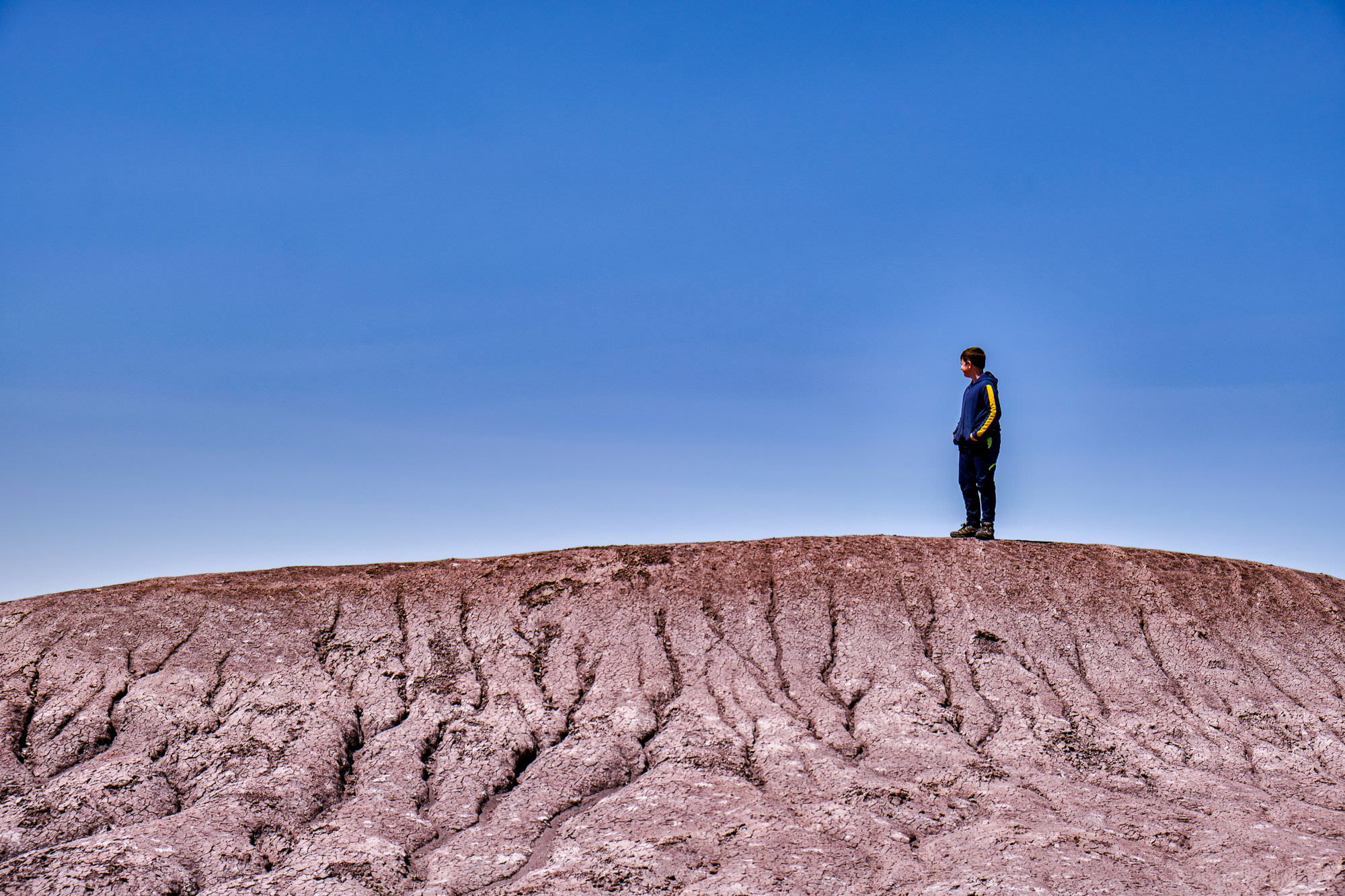
Petrified Forest National Park
The rough landscape of the Blue Mesa;
A quartz gem stuck in the ground;
The hard glassy surface of the petrified trees;
The rusty metal of the car under my hands;
The hardened sand of the Blue Mesa crunching underfoot.
I would go again to hike more on the Blue Mesa.







